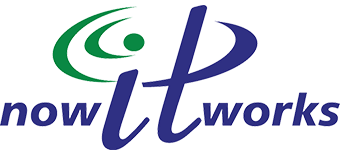- Learn how a low-tech IT responsibility matrix (IRM) will keep your business running efficiently and reliably
- Discover how to create an IRM that fits your business
- Unlock the full benefits of an IRM without purchasing anything new
What is an IT Responsibility Matrix?
Sometimes good IT strategy requires low-tech solutions. One example is an old-fashioned “responsibility matrix,” but we like to call it an “IT Reliability Matrix.”
In other words, your IT Reliability Matrix (IRM) provides a low-tech map of who is responsible for managing and administering the technology that runs your business operations. Think of it as direct access to the parties who can take immediate action to resolve an issue.
In addition to your regular team, you might have retained an IT managed service provider (MSP) to keep your business running smoothly and to help you respond when something goes wrong. And here’s where having your IRM at your fingertips comes in handy. Consider the following hypothetical situation.
How One SMB Crashed for No Good Reason
As owner and CEO of your small business, you receive notices of problems from your team at all hours. But this phone call from Jill, your sales manager, at 6:42 pm Tuesday evening is urgent. In a panicked voice, she tells you that your sales CRM has stopped working. In fact, she stayed late to prepare for some early meetings when the system crashed. Though she rebooted twice, the CRM still wouldn’t load. Come morning, your sales operation will be nonfunctional.
You received Jill’s voicemail an hour after she left it. Now, you send an urgent email to your IT managed service provider (MSP) for help. While normally the right course of action, in this case, CRMWorldview hosts your CRM. This means your MSP doesn’t have administrative control.
Now, any good MSP would see your message first thing in the morning and make it a high-priority ticket. They will then reach out to the vendor and begin the process of understanding the issue. In addition, they’d reach out to Jill about next steps. However, this happens almost twelve hours after the event. Ready for the worst part? CRMWorldview actually offers 24/7 support. So, they were available to talk with Jill when the CRM stopped working. Sadly, she didn’t know this and neither did you.
In this case, an IRM would have saved you time (literally money) and stress.
What Your IRM Can Tell Your Managed Service Provider
To get started on resolving your CRM problem, your MSP will probably use some or all the following pieces of information.
- Name and contact info for the manager or administrator who is responsible for overseeing the operation of your CRM
- Whether the CRM software resides on internal computers or servers in your office or in the cloud
- If internal servers are involved, the username and password to access them
- Vendor’s name for the software and any records of maintenance or updating
- Contact info for employees who access the CRM and for which purposes
- Whether you can create an administrator account that will allow your MSP to access your CRM
Your MSP might already have some of the above information, but it might have become out of date over time as your staff and their roles shifted. Having your IRM handy in such a situation will save everyone some time.?
An IT Reliability Matrix Prepares for Addressing Trouble
How should you organize a technology inventory for your business?
You might begin by listing all your employees according to role. Tip: construct a grid or matrix with names of employees in the first column and additional info in columns for each employee.
Identify an overall App Administrator who coordinates management of all software applications that your business uses. Provide contact info.
Identify those responsible for overseeing each software application that your business uses. This should be persons whom other employees contact when a minor question arises. Provide usernames.
Identify person(s) responsible for overseeing each piece of technology equipment used. This should be the person whom other employees contact when a hardware problem arises.
List any outside vendors who manage software or hardware and provide their contact info.
Gather and list information on licenses and subscriptions for all software. Specify where the software resides and include info on any upgrades or updates.
Identify where your current website domain lives and provide your updated credentials. Provide delegate access to your domain name and credentials.
Additional Benefits of Having an IT Responsibility Matrix
An IRM will pay off for you in ways other than coping with emergency disruptions. Having an up-to-date IRM will
- Allow you to keep tabs on who performs which role(s) in your company – If you need to replace someone or shift roles, your matrix will make doing so much easier and more logical.
- Help you keep abreast of your current technology and what might be needed to expand your operations in the future – Scaling up or changing your technology profile is a discussion that you should have with your MSP regularly.
- Improve your communications with your staff – Sharing your IRM with your employees will give everyone a better picture of your business’s operations and give them a chance to offer significant suggestions for improvement.
- Budget for your technology needs more appropriately – By seeing at a glance how your technology contributes to your entire business, you will be able to include needed changes in your financial planning more readily.
Creating an IT Reliability Matrix will confer immediate benefits without having to purchase additional hardware or software. It’s a low-tech way to make technology work for you.
If you have any questions or need assistance, get in touch with us at Now IT Works.

